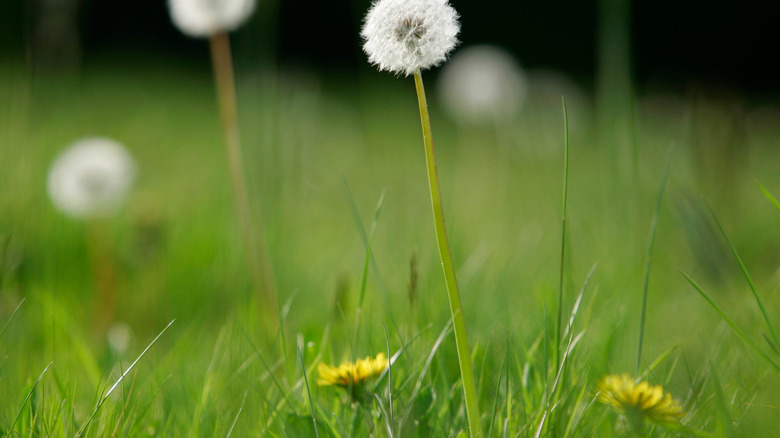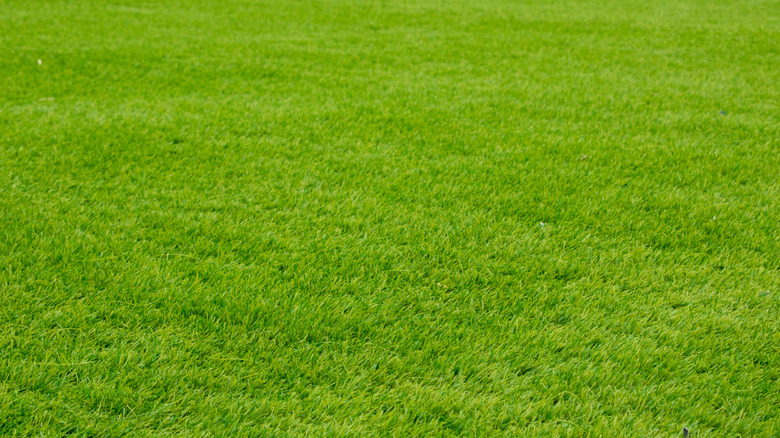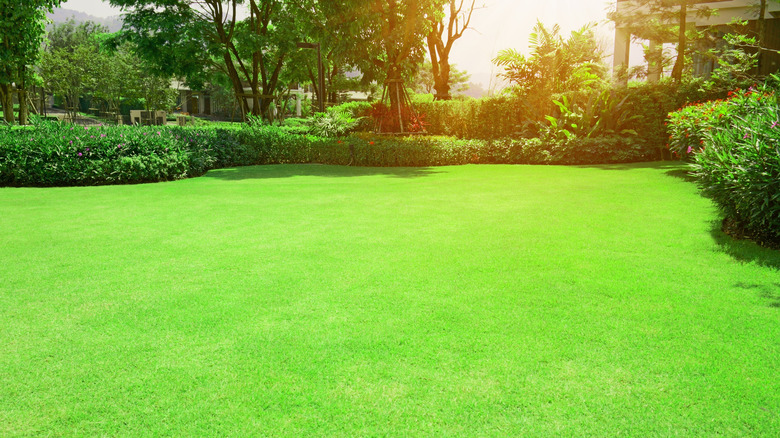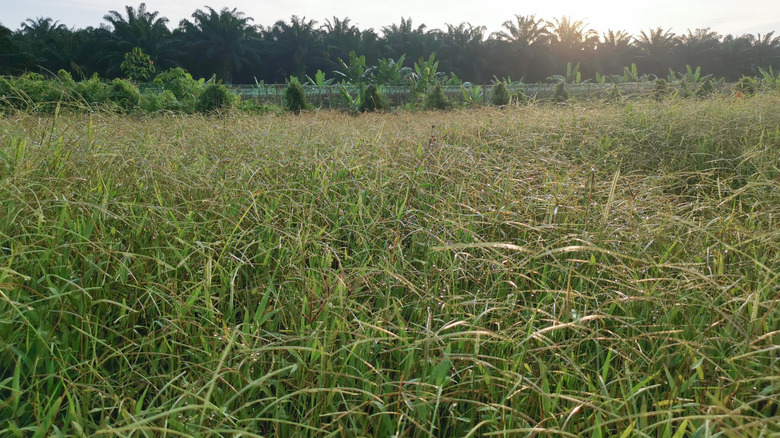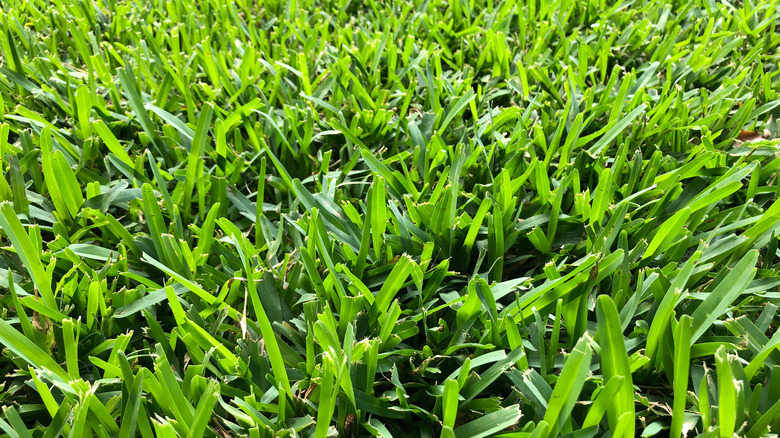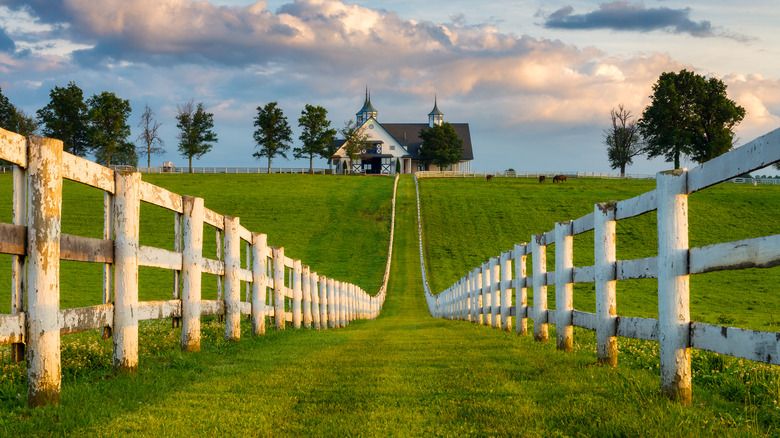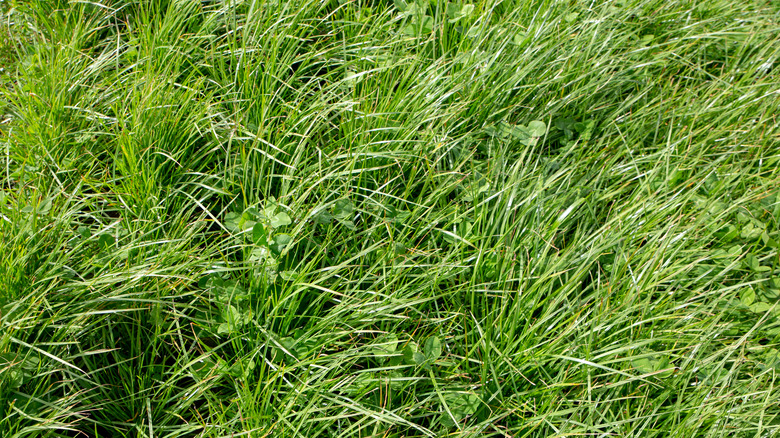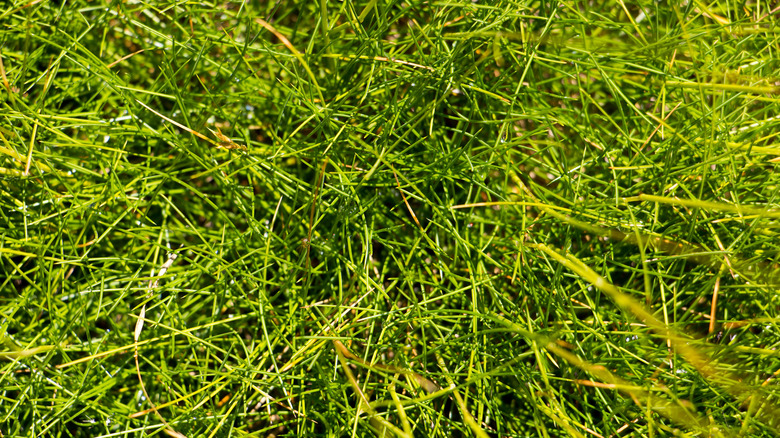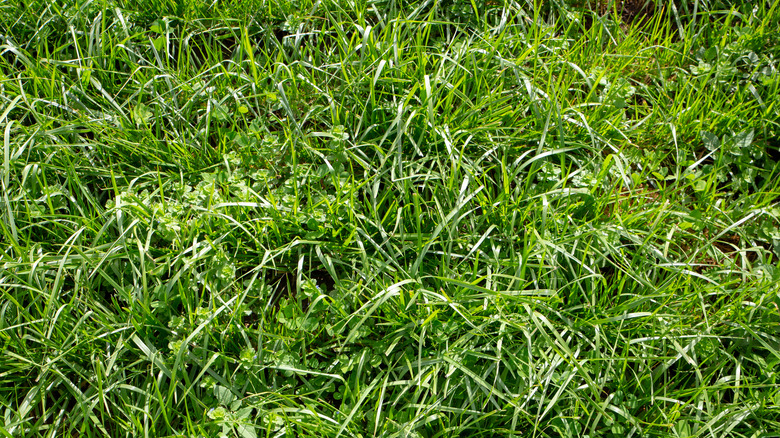What Are The Different Types Of Grass Seed?
If you're buying a new home or just want to revamp your current property, reworking your lawn is a great way to improve curb appeal and give your home a polished look. While there are around 11,000 types of grass species, homeowners and landscapers need to choose between only a handful of species that are suited for a healthy lawn. Location, function, and desired aesthetic will help determine which grass seed is best for you.
Lawn grasses can be split up into two different categories — warm-season grasses and cool-season grasses. Warm-season grasses typically grow in the South and the Southwest U.S., while cool-season grasses typically grow in the Northeast and Pacific Northwest. Below we will identify eight different varieties of lawn grass seed — four warm-season and four cool-season — and their characteristics, maintenance requirements, and uses. After reading, you should have an idea of which grass seed is best suited for your lawn.
Bermuda grass seed
Bermuda grass, known scientifically as cynodon dactylon, is a warm-season grass that is one of the most popular in the southern U.S. It is used for home lawns as well as recreational lawns like golf courses, baseball fields, and football fields. Bermuda grass is heat and drought-tolerant. According to Lowe's, it can stay healthy with only about 1 inch of water per week. It is also tolerant to repeated usage, so it is a great option for sports fields or lawns with heavy traffic, children, and pets.
Bermuda grass can be grown directly from the seed, which does best in slightly acidic soil with a pH between 6 and 7. It requires full sunlight, so it is not a good option for shaded properties. It has the fastest growth rate of any of the commonly used warm-season grasses, so it requires more maintenance than other species. Experts recommend you maintain Bermuda grass at about 1 to 2 inches. Like other warm-season grasses, it remains green in its growing months but can turn brown in the dormant winter months.
Zoysia grass seed
Zoysia grass is another popular species of lawn grass. It is a great option for planters that want a low-maintenance, warm-season grass that is more resistant to cold temperatures. It does not require frequent watering or fertilization. It is also more tolerant to shade than other warm-season grasses.
It is often used in the transition zone of the U.S. The transition zone refers to the areas in between the North and South, where temperatures vary, and it can be difficult for certain warm or cool-season grasses to flourish. Lawn Starter provides a visual on their site if you are unsure which zone you are in. Since zoysia grass grows slowly, some planters prefer to start with sod, however, it can be grown directly from the seed. It can tolerate low mowing heights, making it popular for golf courses.
Zoysia grass hits its peak growth from late spring to summer and goes dormant in the winter months, though in tropical climates, it can stay green throughout the year. It has a soft feel, fine texture, and grayish-green color.
Bahia grass seed
Bahia grass, scientifically known as paspalum notatum, is a warm-season grass that is native to Mexico and South America. It has been popularized as a lawn grass in the southern U.S. because it can thrive in sandy, nutrient-poor soils that many other types of grass cannot. It does not require fertilization and has a fast growth rate.
Bahia grass does not have the classic, well-kept lawn aesthetic and tends to have a rougher texture. It develops a V-shaped seed head when it is not regularly managed. According to Pennington, bahia grass seeds germinate slowly, but once they are established, they grow easily. For this reason, planters do not need to buy sod and can instead grow bahia grass straight from the seed. It is a strong grass and can withstand heavy usage. It is a great option for homeowners who live in warm areas with sandy soil and substandard growing conditions.
St. Augustine grass seed
St. Augustine grass, or stenotaphrum secundatum, is a warm-season grass that grows in the southeastern U.S. and Texas. It is commonly known as buffalo grass or buffalo turf in other parts of the world, not to be confused with Bouteloua dactyloidesm, which carries the same name in the U.S. St. Augustine grass is the least tolerant to cold of the commonly planted warm-season grasses. It performs best in hardiness zones 8 through 10. It does not easily grow from seeds, so laying down sod is the best option when choosing this variety of grass.
In terms of appearance, St. Augustine grass can have a visible bluish tint. It grows thick and has wide leaves with semi-rounded tips. The Spruce notes that it is very tolerant to salt and humidity, so it is ideal for lawns in coastal regions — especially the areas surrounding the Gulf Coast.
Kentucky bluegrass seed
One of the most well-known lawn grasses is Kentucky bluegrass, or poa pratensis. Kentucky bluegrass is a cool-season grass noted for its beautiful, lush appearance. It prefers warm summers and cold winters, so it is used coast to coast across the northern U.S. It was originally used as a pasture grass in the U.S. — there is even an entire region of Kentucky known as the bluegrass region that is known for its rolling hills and bluegrass pastures.
The grass' shallow roots mean a lower tolerance for heat and drought, however, many homeowners and landscapers in the South and Southwest still maintain Kentucky bluegrass with extensive watering. Its rich color and texture make it the ideal lawn grass despite its slow growth and relatively high maintenance requirements. In warmer areas like the transition zone, it may be necessary to water Kentucky bluegrass up to 2 inches per week. According to Pennington, the best time to plant Kentucky bluegrass seeds is in the early fall. That is when they germinate and establish best.
Perennial ryegrass seed
Perennial ryegrass, or lolium perenne, is the fastest-germinating lawn grass seed. It is a cool-season grass. According to The Spruce, it is able to grow from scattered seed to lawn in as little as 21 days. Perennial ryegrass can be used to seed entire lawns, but it is more commonly used as a temporary filler to patch up damaged lawns because of its short lifespan. For example, it is often seeded over warm-season grasses in the winter months when they go dormant to provide greenery. It then typically dies out by the time the warm-season grasses return to their active state.
Features of perennial ryegrass include dark green color, soft texture, and thin, glossy leaves. It is durable to foot traffic. It is commonly mixed with Kentucky bluegrass seed in the northern U.S. to create a grass mixture that is both sturdy and tolerant to shade. According to Grange Co-Op, it tends to grow thicker in certain areas and can make lawns look clumpy, so it is not always the best option for aesthetics. However, it is low-maintenance, pest-resistant, and hardy.
Fine fescue seed
Another cool-season grass that is common for lawns is fine fescue. Fine fescue is typically made up of a mixture of different fescue seeds. The four common types of fine fescue are chewing's fescue, sheep fescue, hard fescue, and creeping red fescue, all of which look very similar. Fine fescue is distinguishable by its fine leaves and soft feel.
It is a low-maintenance, drought-tolerant, and slow-growing variety of lawn grass that has low moisture and fertilization needs. According to Oregon State University, fine fescue has been gaining recognition in recent years for its environmental sustainability. It typically stays green year-round. Fine fescue can thrive in areas that do not get an abundance of sunlight — in fact, too much sunlight can be detrimental to its growth and lifespan. Unlike its relative tall fescue, fine fescue is not durable to foot traffic and can be slow to recover from damage. It is a great choice for those in cooler climates with a shaded property and those who want a soft, low-maintenance grass.
Tall fescue seed
Tall fescue is another variety of cool-season lawn grass that falls under the fescue genus of plants. Unlike fine fescue, tall fescue has wide, thick leaf blades. Its deep root system makes it more tolerant to heat and drought than other cool-season grasses. It is also more tolerant to cold temperatures than warm-season grasses, making it another popular grass for the transition zone.
Tall fescue grows best directly from the seed. It is recommended to plant the seeds during the fall or spring when temperatures are around 60 to 75 degrees. Weekly watering can be helpful to its growth but are not necessary unless in extended periods of hot weather. It will tolerate most soils with an acidic to neutral pH. Overall, tall fescue is known for its high adaptability and can be a great choice for anyone who wants a thick, durable lawn that can withstand a variety of environmental factors.
